Art World
Nonagenarian Artist Audrey Flack Is Still Booked and Busy With a Tell-All Memoir
The 92-year-old artist's recent exhibition at Hollis Taggart was described as 'the pinnacle of her artistic output.'
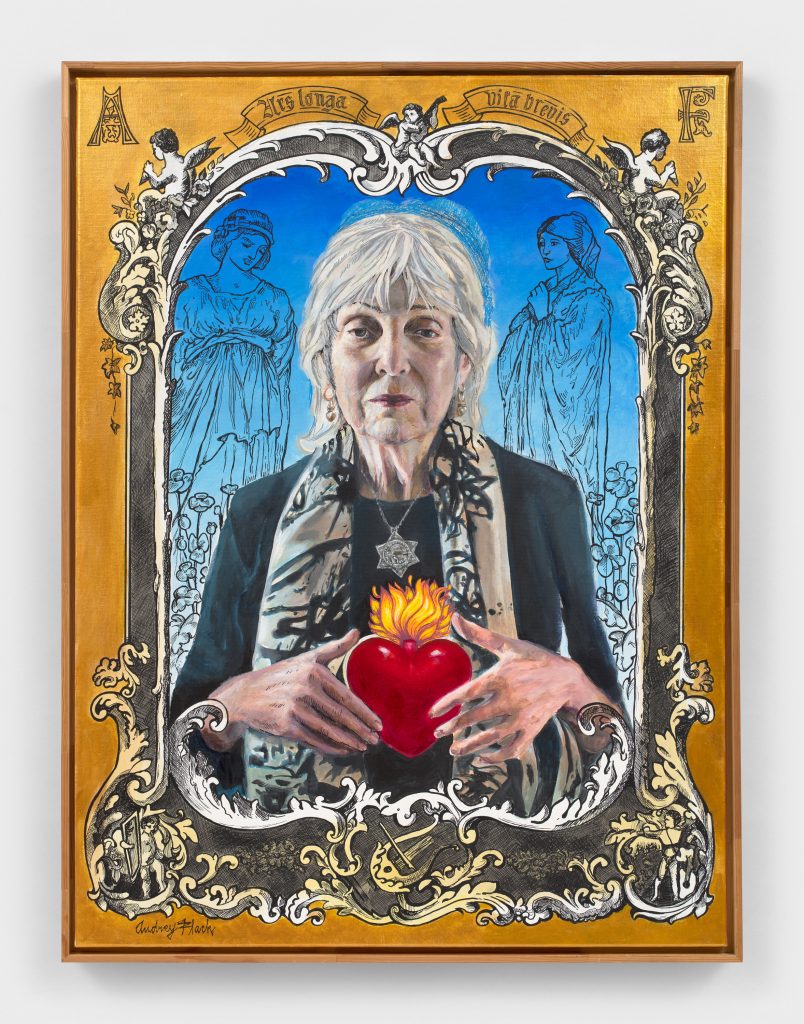
The 92-year-old artist's recent exhibition at Hollis Taggart was described as 'the pinnacle of her artistic output.'

Annikka Olsen

“Since it was 41 years of notes, it would have been an 1,800-page book if everything had gone in,” said 92-year-old artist Audrey Flack on writing her memoir from her home studio on the Upper West Side earlier this year. “The book doesn’t have everything that I’ve experienced, but it has a lot.” Published by Penn State University Press, With Darkness Came Stars begins with a moment of crisis for the artist, wherein in her early 50s she faced a “painting block” prohibiting her from finishing the work for a forthcoming show.
In frustration, she leaves the studio and finds her way to a bench on Broadway where she reflects on her life and career—a moment and place she returns to time and again throughout the book as a narrative touchstone.
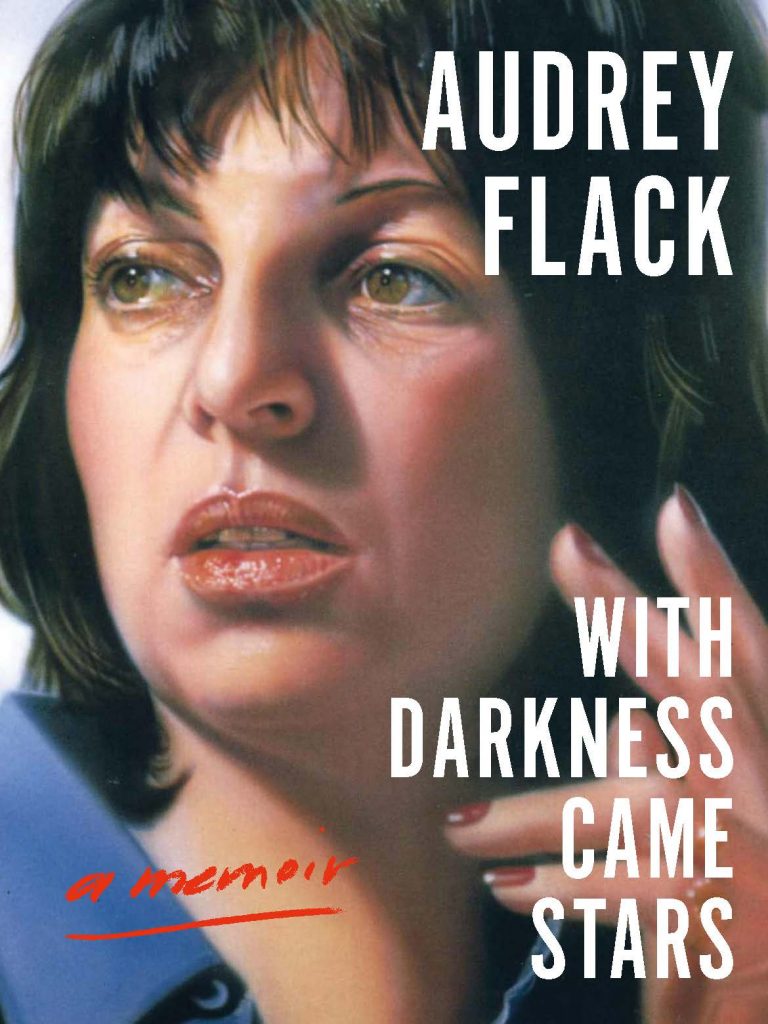
Audrey Flack, With Darkness Came Stars (State College, PA: Penn State University Press, 2024).
“My Broadway bench had become a noisy open-air asylum for me, a place where I could perform isolated self-analysis,” Flack writes in the second section of the memoir in a manner that anyone who has found respite or solace on a New York City bench can relate to. With a sense of frankness and vulnerability Flack recounts, or revisits rather, her artistic beginnings, immersion in the New York art scene at the height of AbEx dominance, personal familial stories, and reflections on being an artist—what it means both on an individual as well as universal level.
With Darkness Came Stars also delves into personal familial stories, and reflections on being an artist—what it means both on an individual as well as universal level.
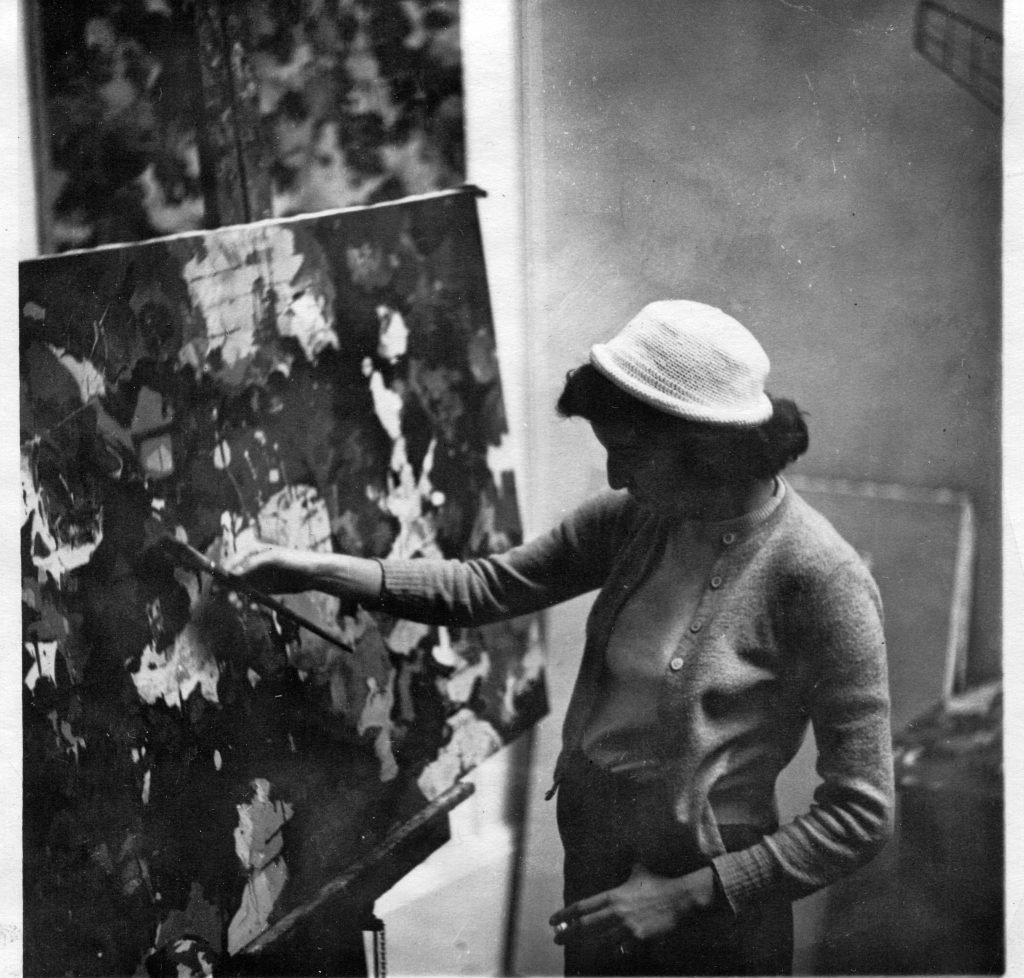
Audrey Flack painting at Yale University. Courtesy of the artist and Penn State University Press.
Flack, who began her career as an Abstract Expressionist, regularly frequented the infamous Cedar Tavern, which was close to her Bowery studio. Through candid observations and unflinching detail, Flack paints the scene of the bar in the 1950s—which was a neighborhood haunt for artists such as Will and Elaine de Kooning, Grace Hartigan, and Jackson Pollock—from her perspective as a young woman trying to find her place in the world. Where many accounts of the period either gloss over or eviscerate the status quo for women at the time, Flack approaches it with a distinct lack of pretention or sensationalism. She writes about the realities of male dominance in the art world (and world at large), of how it was rife with abuses, from alcohol to domestic violence, but also how it was nuanced, complex and, ultimately, not for her.
A particularly clarifying moment is described wherein an inebriated Pollock propositioned Flack at the Cedar Tavern, leading her to not only leave the bar and never return, but leave AbEx entirely. Recalling and reevaluating not only AbEx but the course of Modernism overall has seemingly stayed front of mind for the artist, as she is keenly aware of the myriad ways life as an artist has changed over the decades.
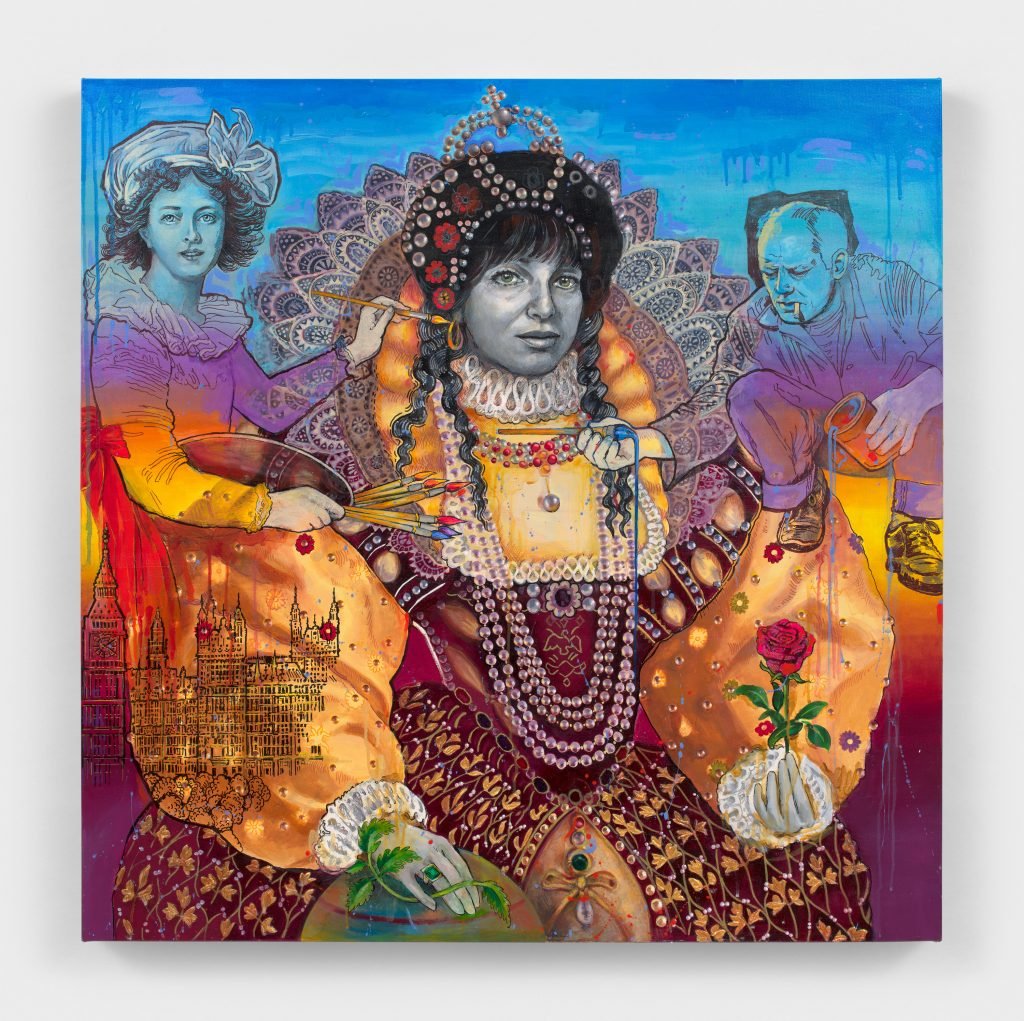
Audrey Flack, A Brush With Destiny (2023). Courtesy of the artist and Hollis Taggart, New York.
“You don’t even have one [movement] now,” Flack observed while looking at her recent work still on studio easels. “AbEx was something like 20 years, now you don’t have 20 years on anything. There’s something wrong with the trajectory of what’s happened to art and what’s happening to artists, who should be able to just slow down. It’s all about, how fast? How much can you produce? How much notoriety can you get? Fame, power, glory. Yes, those are all nice things, and we all need money, and we all want to be recognized, but my life is about art, and I don’t like what I see happening … Artists shouldn’t have to think about producing something quickly.”
What follows in the memoir is the work that many commonly associate her with: Photorealism. Interwoven with her artistic evolution are personal elements of her life, including her abusive first husband and the experience of raising an autistic daughter in a time where the condition was not well understood (“One doctor claimed that autism or children who display autistic qualities were the result of mothers not being warm enough, and so they should be taken away from their mothers,” Flack recalled).
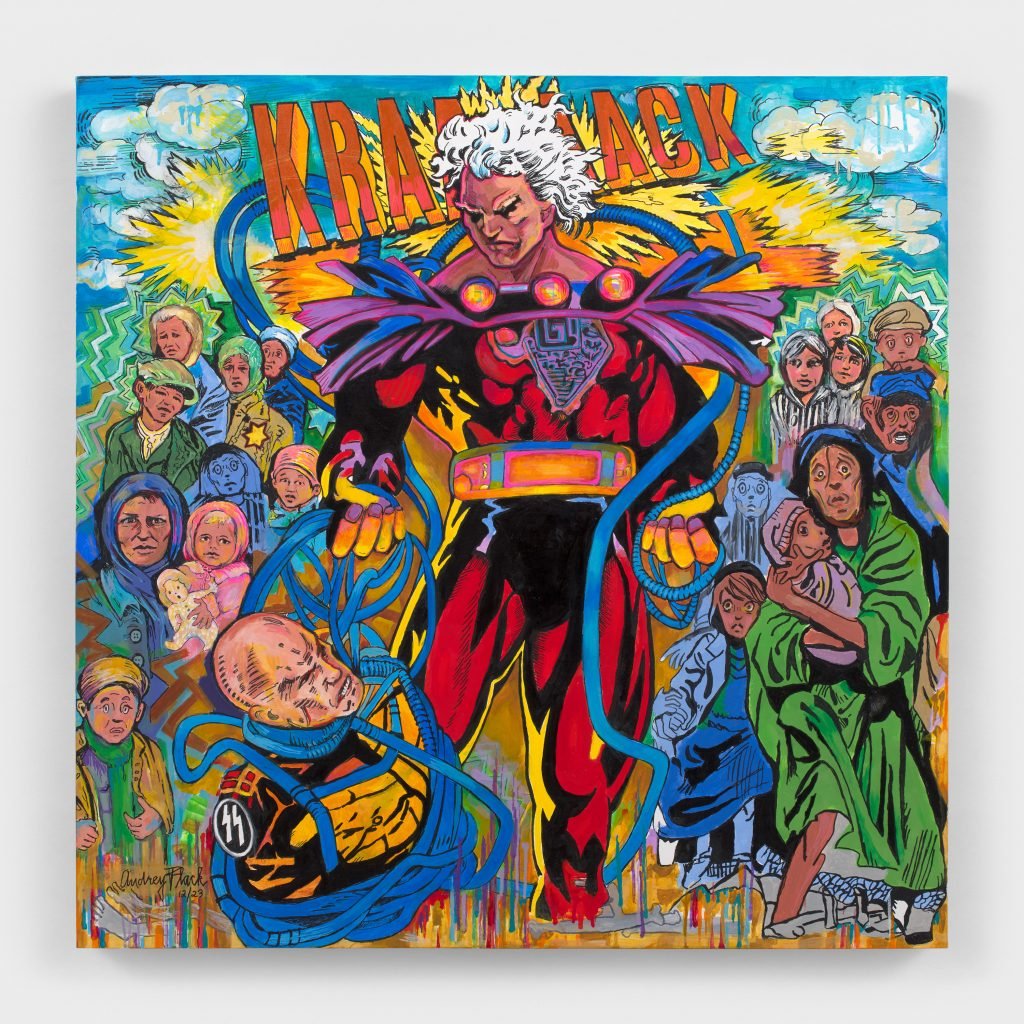
Audrey Flack, Kraaaak (Magneto Victorius) (2023). Courtesy of the artist and Hollis Taggart, New York.
The debut of Flack’s memoir was followed closely by the opening of her solo show of the same title at Hollis Taggart, comprised of sixteen works made over the past three years. Flack spent hours signing copies of her book and taking time to speak to nearly everyone in attendance. In this new body of work, iconic art historical motifs and religious imagery commingle with elements from pop culture—ranging from Marvel’s Magneto and DC’s Wonder Woman to a depiction of Liz Taylor as Cleopatra.
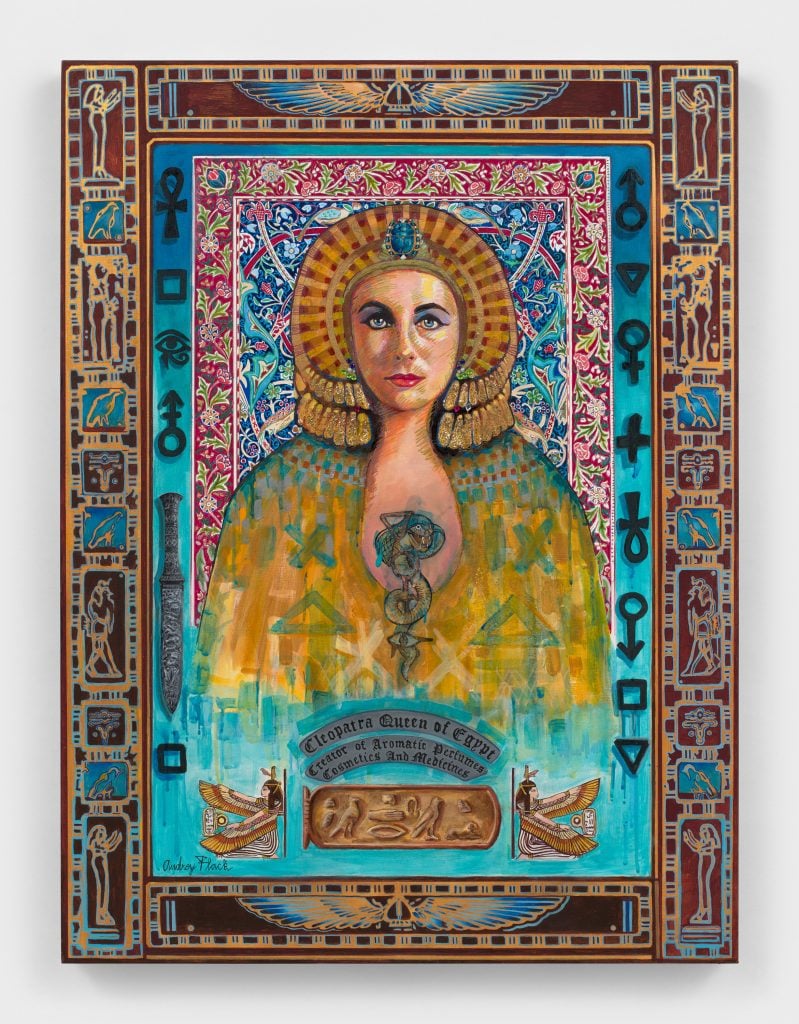
Audrey Flack, Lux Eternal (2022). Courtesy of the artist and Hollis Taggart, New York.
The paintings together in effect act as the crown jewel of the artist’s trajectory that is charted throughout her memoir, marking not only a significant moment in Flack’s career but illustrating the patchwork of experiences, memories, and creative output that together make up a life lived fully, or the “timestream,” as she describes it.
Flack sees her work less like objects so much as portals to specific moments in that “timestream,” a way to recall various figures and what they mean to her personally. And though Flack’s historical work could not be considered subdued in color by any means, the new paintings have a distinct eye-catching luminosity. Flack attributes this to her eyesight, saying “My eyes were great, I had incredible vision. One eye saw with blue hues and the other eye saw with warmer. I was a colorist … What’s surreal for me is what’s happened to the way I see the world. My colors have gotten brighter and lighter. That’s surprising.”
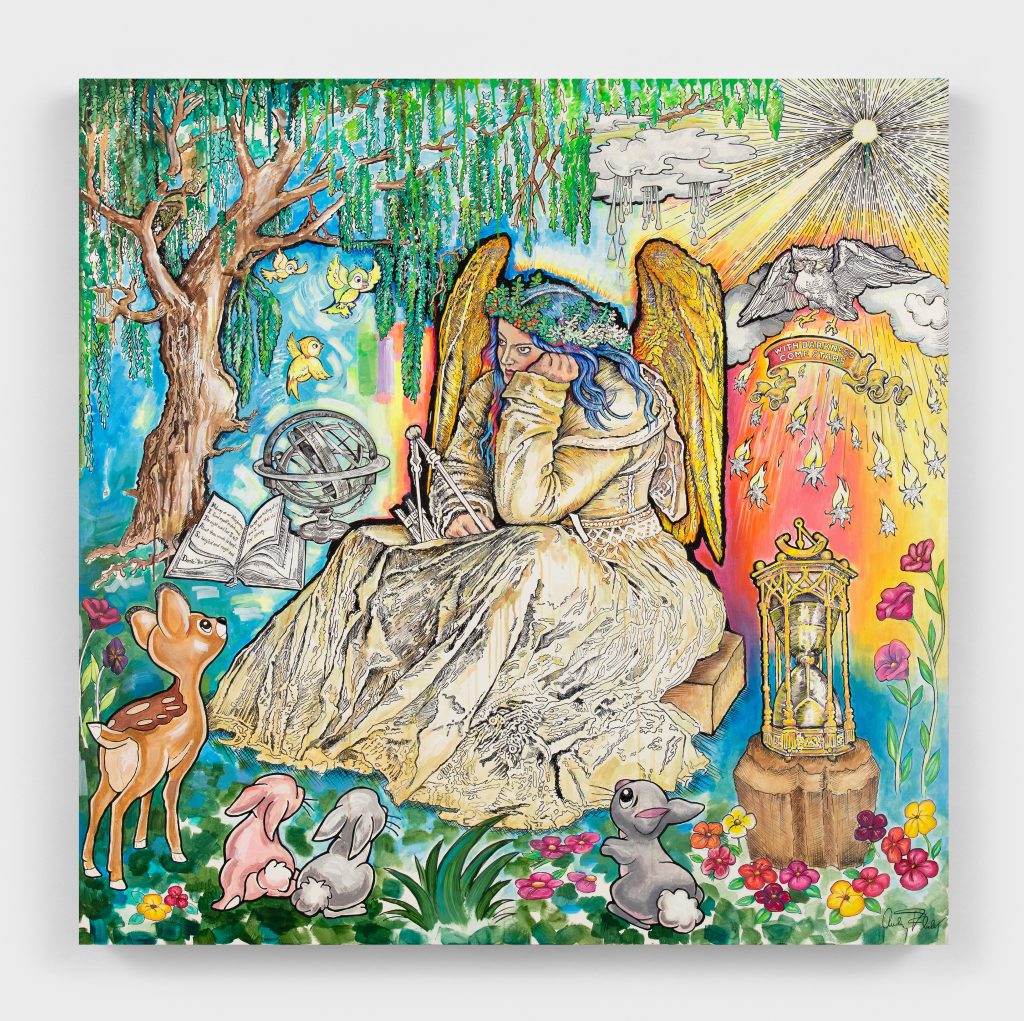
Audrey Flack, With Darkness Comes Stars: Melancholia (2021). Courtesy of the artist and Hollis Taggart, New York.
While the debut of a tell-all memoir and solo exhibition of new work is monumental in and of itself, it is not all the artist has on the horizon. Opening October 13, 2024, and on view through April 6, 2025, Flack will be the subject of a solo show at the Parrish Art Museum in Water Mill, New York. And about what’s next, Flack said with her characteristic humor, “The next show in 20 years will be large scale, thank you very much.”